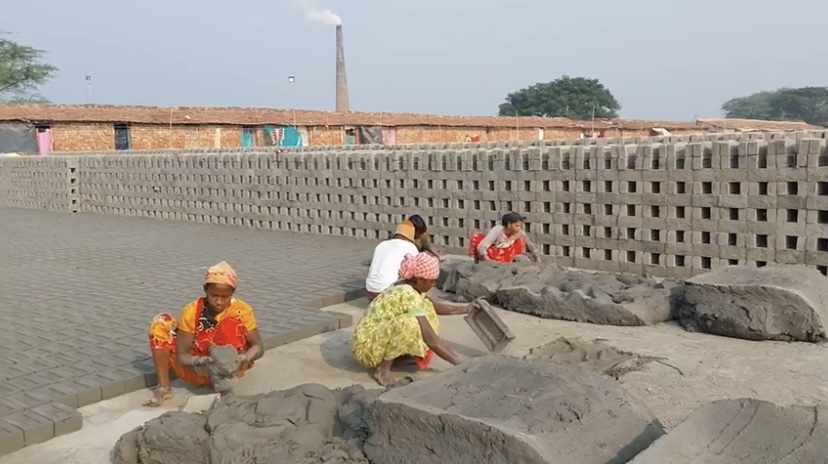The Kiln as a Frame (Frame, Shot, Movement: A Deleuzean Perspective) by Muskan Ahmed CET 2
“We will call the determination of a closed system, a relative closed system which includes everything which is present in the image- sets, characters and props- frames. The frame therefore forms a set which has a great number of parts, that is of elements which is sub-sets. It can be broken down.”
 The shot has been taken at a brick kiln near Minakhan, North 24 Parganas. The sequence opens with the framed shot with women workers at the brick kiln, scooping heaps of clay. The frame operates as a “closed system” in Deleuzian terms, that is with interconnected elements. The sub-sets are within the frame where workers in motion, clay in transition, bricks stacked in neat parallels, and the towering kiln in the distance.
The shot has been taken at a brick kiln near Minakhan, North 24 Parganas. The sequence opens with the framed shot with women workers at the brick kiln, scooping heaps of clay. The frame operates as a “closed system” in Deleuzian terms, that is with interconnected elements. The sub-sets are within the frame where workers in motion, clay in transition, bricks stacked in neat parallels, and the towering kiln in the distance.
Parallels and diagonals structure the composition, with light contrasts between the labor in the foreground and the static solidity of the kiln in the background. The frame is divided and decomposed which embodies the complexity that Deleuze describes: “It is not the same to the right as it is to the left, not above as it is below.” The angle reveals a “multiple perspective,” shifting with movements of the clay moulding to unveil twisted variations within the frame.
The act of shaping clays in this context marks the first stage of “construction”. The scooping and moulding generates continuous qualitative changes within the frame. The stack of bricks in the background forms an orderly parallels, illustrating the emerging structure. The frame, though closed evolves continuously as element - interact, shift and reform.
Deleuze’s concept of “movement- image” permeates the sequence, recording the ceaseless flux of time, space and human toil.
Muskan Ahmed.
Comments
Post a Comment